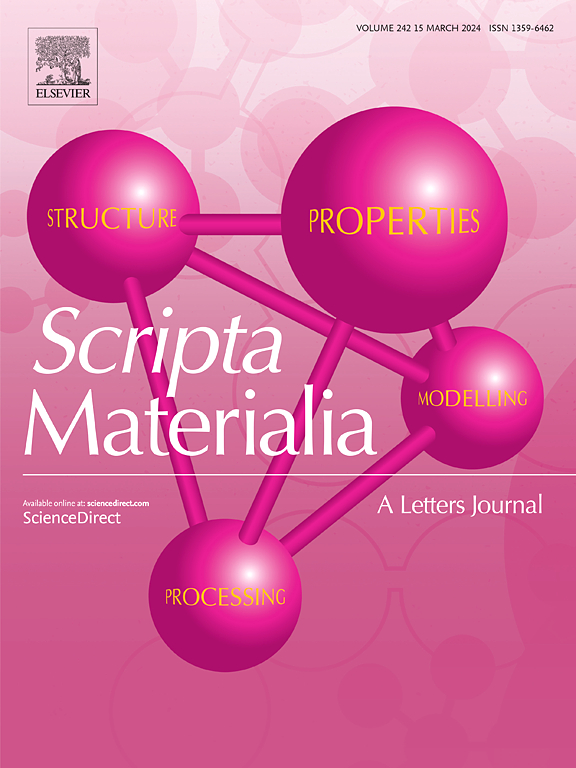bcc -高温合金:展望与挑战
IF 5.3
2区 材料科学
Q2 MATERIALS SCIENCE, MULTIDISCIPLINARY
引用次数: 0
摘要
体心立方BCC-高温合金是一种新兴的材料类别,其显微结构模板是无序BCC基体(例如难熔金属,Fe, Ti),由采用BCC衍生的有序超晶格结构的相干析出物增强,以增强高温性能。这与非常成功的Ni高温合金类似,其性能是由γ/γ′FCC-Ni固溶体和有序Ni3Al的微观结构模板支撑的。bcc -高温合金代表了一种强大的超越镍基高温合金的设计方法,适用于从航空发动机和火箭到聚变能的高温应用。各种bcc -高温合金基体系具有更高的熔点、抗氧化/耐腐蚀/耐辐照、降低密度和/或成本优势。然而,在相稳定性、低温延展性、抗氧化/耐腐蚀性和预测工具的可用性方面存在挑战。本bcc -高温合金观点集解决了以下主要主题的关键挑战、理论和机遇:建模、相变、晶格错配、机械行为、变形机制、氧化/腐蚀和增材制造。本文章由计算机程序翻译,如有差异,请以英文原文为准。

BCC-superalloys: Perspectives and challenges
Body-centred-cubic BCC-superalloys are a nascent materials class following a microstructure template of a disordered BCC matrix (e.g. refractory metal, Fe, Ti) reinforced by coherent precipitates that adopt a BCC-derived ordered superlattice structure, to enable enhanced high temperature performance. This is by analogy to the highly successful Ni superalloys whose properties are underpinned by their microstructure template of γ/ FCC-Ni solid solution and ordered Ni3Al.
BCC-superalloys represent a powerful Beyond Nickel Based Superalloy design approach for high temperature applications from aerospace engines and rockets to fusion energy. Various BCC-superalloy base systems offer increased melting points, oxidation/corrosion/irradiation resistance, reduced density and/or cost advantages. However, challenges exist in phase stability, low temperature ductility, oxidation/corrosion resistance and the availability of predictive tools.
This BCC-superalloys Viewpoint Set addresses key challenges, theories and opportunities across the following overarching topics: Modelling, Phase transformations, Lattice misfit, Mechanical behaviour, Deformation mechanisms, Oxidation/corrosion, and Additive manufacturing.
求助全文
通过发布文献求助,成功后即可免费获取论文全文。
去求助
来源期刊

Scripta Materialia
工程技术-材料科学:综合
CiteScore
11.40
自引率
5.00%
发文量
581
审稿时长
34 days
期刊介绍:
Scripta Materialia is a LETTERS journal of Acta Materialia, providing a forum for the rapid publication of short communications on the relationship between the structure and the properties of inorganic materials. The emphasis is on originality rather than incremental research. Short reports on the development of materials with novel or substantially improved properties are also welcomed. Emphasis is on either the functional or mechanical behavior of metals, ceramics and semiconductors at all length scales.
 求助内容:
求助内容: 应助结果提醒方式:
应助结果提醒方式:


